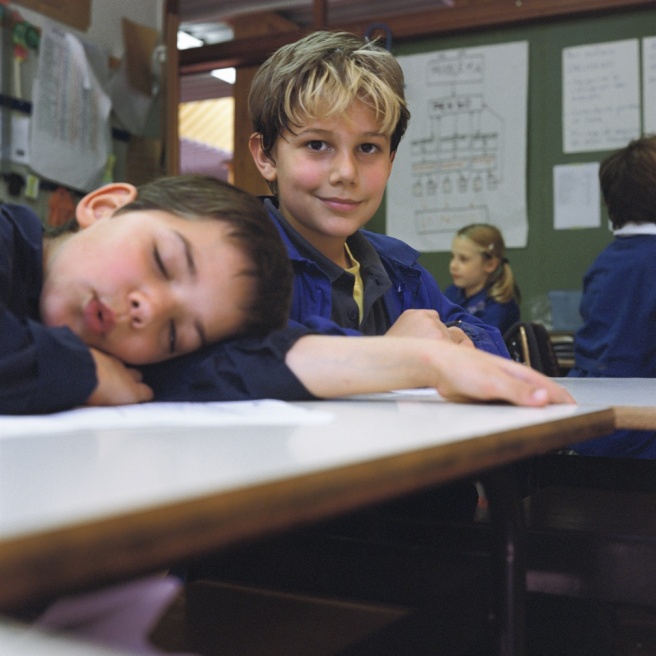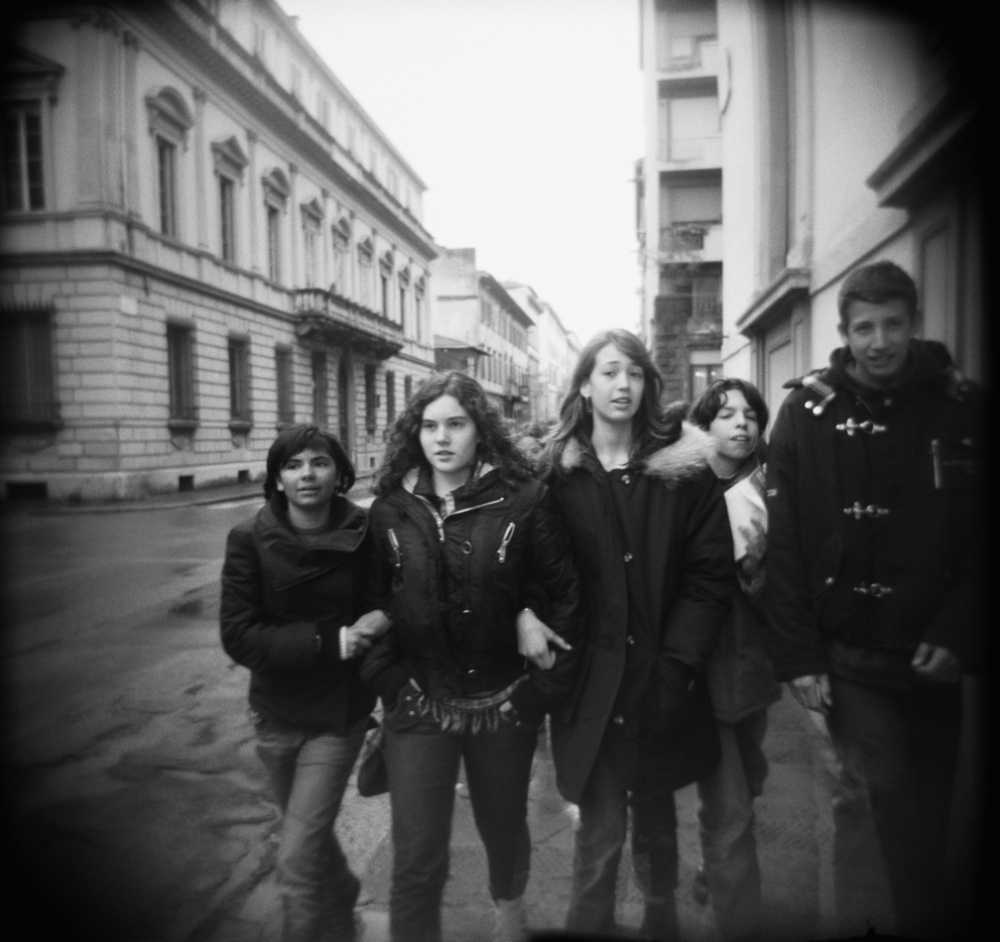I turned a corner and noticed children scurrying down a street. They were elegantly dressed and arrived unexpectedly, riding bikes and scooters or walking with their parents. It was reminiscent of a Fellini film. A door opened and they vanished into an unremarkable Santa Croce building. Without a moment’s notice, the street was deserted. And through the fortune of timing, I discovered Scuola-Cittá Pestalozzi on via Casine in Florence. From that serendipitous encounter blossomed the project, Stop. Run. Play. It began that November 2000 day when I entered the school’s garden to the curious stares of children, and it developed over the next eight years.
Initially, I returned their stares, frozen by a freedom I remembered from my school days. I had noticed through my own son how the relationships between children were changing in American schools. Touching was prohibited. Wrestling, roughhousing, and tumbling resulted in punishment. Boys and girls tended to separate themselves, rarely playing together during recess. Older students didn’t often interact with younger ones. The energy, affection and free-spiritedness I witnessed in the Italian students, this concept of the freedom of play–as boys and girls team up in games or conversations, through tussling and handholding–rekindled memories of my childhood.
Photographing the children during these formative years stimulates a larger discussion about the evolution of playground etiquette. How have the rules changed? Are open acts of affection or friendship encouraged or prohibited in today’s “playground society?" Do our current social, legal and national mores impose a new set of structures and controls on the way our children interact? Does it differ in Italy? Does their close-knit community and cultural upbringing encourage Italian children to express themselves differently than children in the United States?
There was not a predetermined chronological order to the project. I documented one class each year, beginning in November 2000 until their graduation in June 2008. I alternated between a spontaneous plastic Holga camera and a precise Rolleiflex, and shifted from classroom to play time. Rather than direct activities, I adapted to the students’ daily changes. At this early age the children are less guarded, less self-conscious, more open, hidden agendas absent. My goal was to capture their spirit.







































